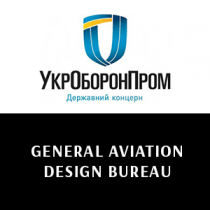Global Airborne Wind Energy (AWE) Market 2017-2027: Active Developer/Supporter Profiles, Interviews And Plans
DUBLIN, September 19, 2017 /PRNewswire/ --
The "Airborne Wind Energy (AWE) 2017-2027" report has been added to Research and Markets' offering.
http://mma.prnewswire.com/media/539438/Research_and_Markets_Logo.jpg
This 195 page report is replete with infographics, tables and graphs clarifying the variety of opportunity and technology grouped under the term AWE. It takes a strictly analytical rather than evangelical approach, pointing out that turbines lifted aloft by helium-filled aerostats make sense in Alaska, where solar cells are pretty useless and wind is sometimes weak. However, we counsel that those targeting cheap electricity for farmers with limited resources will have difficulty competing with diesel unless the law tips the playing field or obtaining fuel is problematic.
AWE has moved from a hobbyist curiosity to attracting around $200 million investment from giants Google, EON, Shell, Schlumberger, Tata, Softbank and others. Two years ago it was widely seen as a solution looking for a problem. However, today, aviation authorities are adapting to accommodate the needs of these kites, tethered wings, aerostats and drones whether they are intended to power a ship, a small farm or - as GW offshore arrays - supplying a national grid.
Potentially, AWE will do all that with no emissions and at a fraction of the cost of the conventional wind turbines, down where wind is weaker and more fitful. Clearly things are changing and the analysts, after two years of interviews, visits and analysis by PhD level, multi-lingual researchers, can now make sense of it all, including giving profiles of 25 winners and losers. The report appraises what remains between the proponents and commercial success, including attracting the necessary level of next-stage finance and technical assistance. How much? When?
The analyst's approach is creative. We believe the new solar roads have a place on commercial ships polluting as much as 30,000 cars and, in tandem with AWE, we believe an electric ship could even become energy independent with zero emissions. We distinguish between AWE applications where the price of grid electricity is critical and where it is irrelevant. Learn the challenges of convincing all interested parties of the safety of these systems. Realistic and improving figures for maintenance, availability and life are crucial.
Impediments are appraised such an electrically launched AWE system using significant energy part of the time. We report ways of reducing the intermittency and therefore energy storage needed in an AWE system and we reveal the near-consensus concerning which designs are most predictable and controllable and we assess which proponents are the most promising investments, providing certain limitations are overcome.
Learn how the technologies can be leveraged with extending solar panels on the generator and wave power in the offshore support. Could the flying device produce useful solar and wind energy? How realistic is flying much higher? What are the lessons from the proponents that have gone under? What has been said in recent conferences and interviews on the subject?
Key Topics Covered:
1. EXECUTIVE SUMMARY AND CONCLUSIONS
1.1. Purpose of this report
1.2. Overall conclusion
1.3. Background
1.4. Diesel killer or wind turbine killer?
1.5. Energy Independent shipping
1.6. Potential for multi-mode
1.7. Choice of altitude
1.8. Capacity factor
1.9. On-grid vs off-grid, optimal power
1.10. Investment by technology: wrong focus
1.11. Technology choice
1.12. The lightning flash dilemma
1.13. The illumination at night dilemma
1.14. Killing birds and bats
1.15. Derisked technology
1.16. Autonomy
1.17. Developers
1.18. Investment timeline
1.19. Technology roadmap 1900-2037
1.20. Commercialisation roadmap 2017-2025
1.21. Market forecast 2017-2037
1.22. Sophisticated technology, often primitive marketing
1.23. Example of opportunity: Ukraine
2. INTRODUCTION
2.1. Definition of energy harvesting
2.2. Need for high power harvesting
2.3. Characteristics of energy harvesting
2.4. Two very different AWE markets
2.5. Marine: a later option
2.6. HPEH technologies including AWE
2.7. EH systems
2.8. Multiple energy harvesting
2.9. AWE in the big picture
2.10. HPEH in context: IRENA Roadmap to 27% Renewable
2.11. Electric vehicle end game: free non-stop travel
2.12. Simpler, more viable off-grid power
2.13. Microgrids attract
2.14. Capacity factors, utilisation factors and load factors
2.15. Offshore energy innovation could leverage AWES
2.16. World's biggest wind turbines go online near Liverpool UK
3. ELECTRODYNAMIC AND PHOTOVOLTAIC HARVESTING
3.1. Definition and scope
3.2. Many modes and applications compared
4. AIRBORNE WIND ENERGY AWE PRINCIPLES
4.1. Introduction
4.2. The jargon
4.3. Favoured technologies
4.4. ABB assessment
4.5. Rotating dual kites the ultimate?
4.6. Main options still taken seriously
5. SOME ACTIVE DEVELOPER/ SUPPORTER PROFILES, INTERVIEWS AND PLANS
5.1. Altaeros Energies USA
5.2. Ampyx Power Netherlands
5.3. The technology of airborne wind energy
5.4. Artemis Intelligent Power
5.5. AWESCO European Union
5.6. Bruce Banks Sails
5.7. BVG Associates
5.8. Delft University of Technology Netherlands/ Karlsruhe University of Applied Sciences Germany
5.9. e-Kite Netherlands
5.10. EnerKite Germany
5.11. Enevate BV Netherlands
5.12. e-Wind USA
5.13. Imperial College and National Wind Tunnel Facility (NWTF)
5.14. Innovate UK
5.15. Keynvor Morlift Ltd
5.16. Kite Power Solutions UK
5.17. KiteGen Italy
5.18. Kitemill Norway
5.19. Kitenergy Italy
5.20. Kitepower Netherlands
5.21. KiteX Denmark
5.22. kPower USA
5.23. Makani (Google-x)
5.24. National Composites Centre)
5.25. Open Source AWE
5.26. Pierre Benhaem, Conception, Troyes Area, France
5.27. Rotokite Italy
5.28. SkySails Power Germany
5.29. Superturbine USA, France
5.30. TwingTec Switzerland
5.31. University of Limerick
5.32. Windlift USA
5.33. Windswept and Interesting UK
5.34. Xsens Netherlands
6. LESSONS FROM THE PAST
6.1. Guangdong High Altitude Wind Power China/ SkyWind USA
6.2. Highest Wind USA
6.3. Joby Energy USA
6.4. Magenn Power Canada
6.5. Omnidea Portugal
7. EXAMPLES OF INTERVIEWS CONCERNING HIGH POWER ENERGY HARVESTING ON MARINE CRAFT
For more information about this report visit https://www.researchandmarkets.com/research/dfmz72/airborne_wind
Media Contact:
Research and Markets
Laura Wood, Senior Manager
press@researchandmarkets.com
For E.S.T Office Hours Call +1-917-300-0470
For U.S./CAN Toll Free Call +1-800-526-8630
For GMT Office Hours Call +353-1-416-8900
U.S. Fax: 646-607-1907
Fax (outside U.S.): +353-1-481-1716
View original content:http://www.prnewswire.com/news-releases/global-airborne-wind-energy-awe-market-2017-2027-active-developersupporter-profiles-interviews-and-plans-300521906.html
SOURCE Research and Markets





